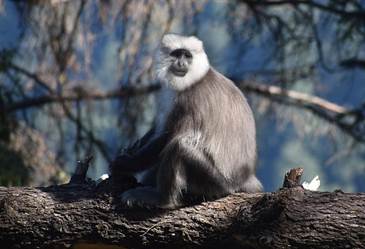Description

Copyright infringement not intended
Context: Differing elevations of habitation make one group of Himalayan Gray Langur prefer fruits and another group relish flowers, says a study published in Journal of Threatened Taxa
Details:
- Three primatologists studied the diet composition of five such groups in and around the Kalatop-Khajjiar Wildlife Sanctuary in Himachal Pradesh between September and November 2020. They especially concentrated on two groups, one inhabiting the Kalatop forest at an average altitude of 2,396 metres, and the other based in the Khajjiar forest at an average altitude of 2,188 metres.
- The domains of the two groups were only 208 metres apart, but the altitudinal gap made a huge difference when the monkeys took a break from feeding on the leaves of some 20 species of plants, primarily the Himalayan ivy (Hedera nepalensis) and the Himalayan oak (Quercus oblongata).
- While the Kalatop group satisfied their craving for something different by feeding on flowers, the Khajjiar group ate fruits for a change of taste.
About:
- The Himalayan Gray Langur or the Chamba Sacred Langur (Semnopithecus ajax) is a colobine, meaning leaf-eating monkey.
- It is considered an endangered species globally as its population is estimated to be less than 1,500 mature individuals in 15-20 groups.

https://epaper.thehindu.com/ccidist-ws/th/th_delhi/issues/15183/OPS/GP0AGL9HC.1+G1JAGLQAS.1.html












